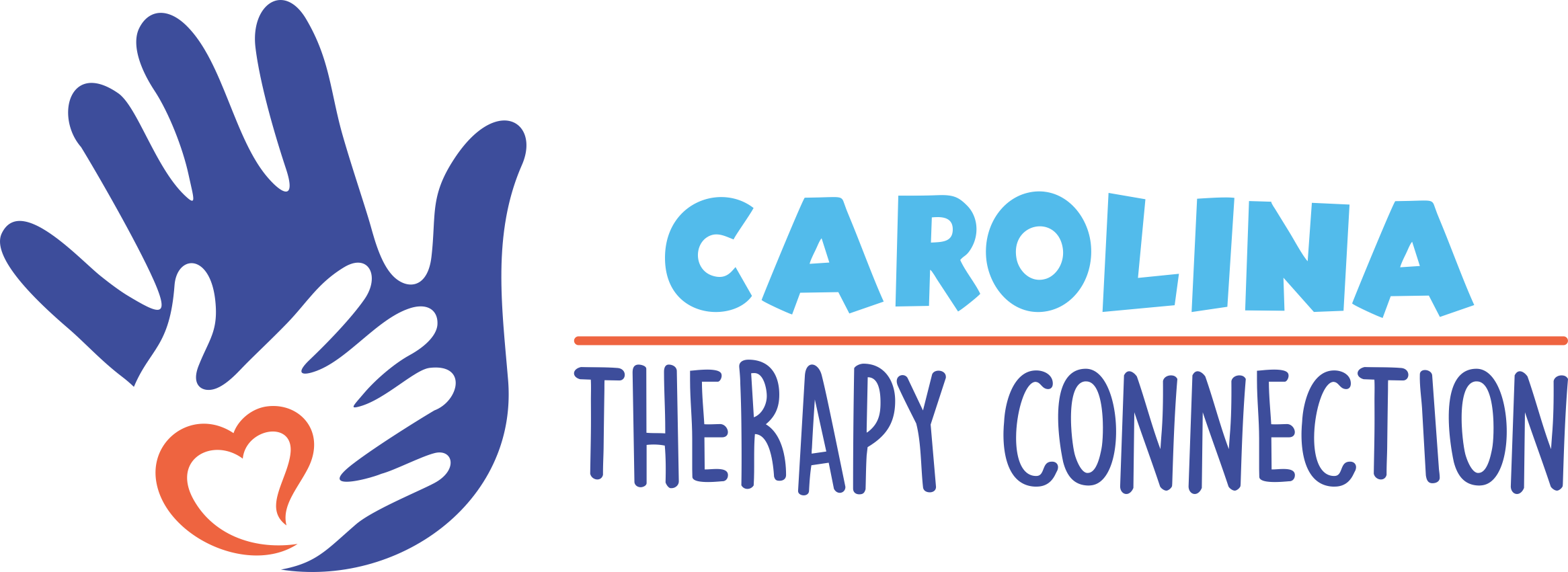
Speech Therapy
Speech therapy is the assessment and treatment of communication problems and speech disorders. Developing strong communication skills is one of the most important elements to socializing and creating relationships. Communicating can be difficult for children with speech and/or language disorders, causing frustration and isolation. A Speech-Language Pathologist helps children overcome communication obstacles.
Your child may need speech therapy if they have difficulty with speech/articulation (pronouncing sounds or words) or using words to communicate. A speech and language pathologist can help address these challenges by working on improving speech and language skills.
Our team of pediatric speech therapists provide screening, assessment, consultation, and treatment in the following areas:
- Early Intervention Services
- Feeding and Oral Motor Development
- Articulation/Phonological Disorders and Delays
- Language Disorders and Delays
- Motor-Based Speech Disorders including Childhood Apraxia of Speech (CAS)
- Fluency Disorders
- Hearing screenings available with Speech/Language Evaluations
- Augmentative and Alternative Communication (AAC) Evaluations
We offer Speech Therapy services to children birth through adolescence, with a wide variety of needs and diagnoses:
- Communication/Language Delays and Disorders
- Hearing Loss
- Childhood Apraxia of Speech
- Autism Spectrum Disorders
- Asperger's Syndrome, Pervasive Developmental Disorder (PDD)
- Attention Deficit Hyperactivity Disorder (ADD & ADHD)
- Learning Disability
- Developmental Delay
- Downs Syndrome
- Cerebral Palsy
- Feeding Disorders
- Behavioral and Emotional Disorders
We also provide Family Support services such as:
- Development of Home Programs
- Preschool and School Consultations
- Parent Consultations
Speech and language therapy is concerned with the management of disorders of speech, language, communication and swallowing in children. Speech therapist’s work with children who are exhibiting the following characteristics:
- mild, moderate or severe learning difficulties
- physical disabilities
- language delay
- specific language impairment
- specific difficulties in producing sounds
- hearing impairment
- cleft palate
- stammering
- autism/social interaction difficulties
- dyslexia
- voice disorders
All children are unique and develop at their own rates. Even siblings who are growing up in the same home might acquire language skills at different times! So, how do we know if or when to take our children to speech therapy? Here are a few signs to look for that might be indicators that your child could benefit from an evaluation by a certified speech-language pathologist:
- Demonstrates any “regressions” or loss of language/words (i.e. he used to say “mama” but stopped)
- Does not use 25 words consistently by 18 months
- Uses gestures than words at 18 months
- Uses less than 50 words by 2 years
- Does not combine words into 2- and 3-word phrases by 2 years
- Not able to understand or follow directions by 2 years
- Familiar people understand less than 50% of what they say at 2 years
- Is not consistently combining words into short sentences by 2.5 years
- Familiar people understand less than 75% of what they say at 3 years
- Unfamiliar listeners have difficulty understanding child at 4 years
- Difficulty engaging with peers in pretend/imaginative play at 3-4 years
- Does not develop more complex grammatical concepts between 3-5 years
Average age of acquisition of English Consonants across the world
(90-100% criteria)
2 years old: P
3 years old: B, T, D, K, G, M, N, NG, F, H, Y, W
4 years old: V, S, Z, SH, CH, J, L
5 years old: TH (voiced “THem”) R
6 years old: TH (voiceless “paTH”)
Augmentative and Alternative Communication, or AAC, is a widely used tool to aid in communication, speech and language. AAC includes all of the ways we share our ideas and feelings without talking. We all use forms of AAC every day, including facial expressions, gestures and body language. We may not realize how often we communicate without talking. People with severe speech or language problems may need AAC to help them communicate. Some may use it all of the time. Others may say some words but use AAC for longer sentences or with people they don’t know well. AAC can help in school, at work, and when talking with friends and family.” (ASHA)
There are two categories of AAC systems: aided and unaided. Unaided communication systems rely on non-verbal methods to convey messages such as gestures, sign language, facial expressions, body language-basically any form of communication that only uses the body. Aided communication systems require some form of external support in addition to the user’s body like a tool or device. Within aided AAC, there are basic and high-tech tools. Some basic/low tech options include: pen and paper, texting, pointing to letters, words, and pictures symbols. High-tech options include: voice output devices (Dynavox, NovaChats, Accents, etc.), electronic devices, computers, and iPads. Some SGDs (speech-generating devices) can even speak in different languages to help any child with communication.
There are multiple benefits of using AAC:
- It improves social skills by opening every opportunity to communicate with richer and more frequent interaction.
- AAC can reduce the amount of frustration children often have when they cannot voice their thoughts.
- A child can branch out and have confidence in their communication when they have a speech aid.
- A child can develop their vocabulary and articulation skills through the use of an AAC device.
- AAC improves overall autonomy, decision making and independence.
Finding the right device for your child depends on many things including the child’s age, personality, communication skills, physical skills, and cost. In some cases AAC will be a permanent part of a person’s communication system, whereas for others it will be temporary. In all cases it is necessary that an individualized AAC system be developed to meet the child’s needs in all environments. A proper AAC assessment can help determine the best communication system for a person with complex communication needs.
